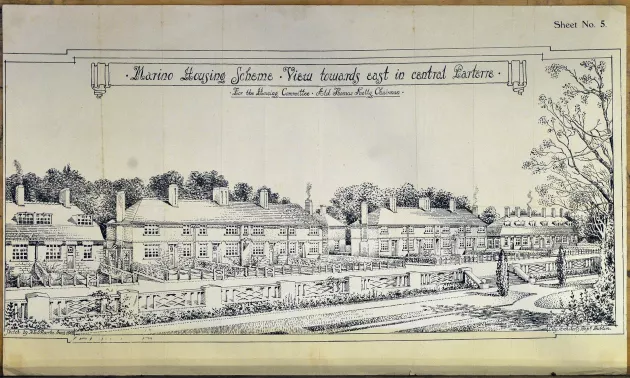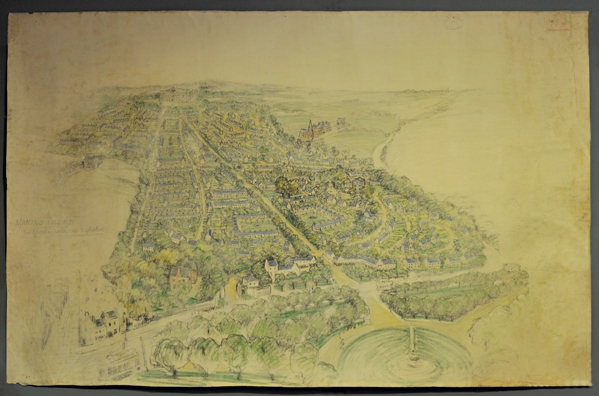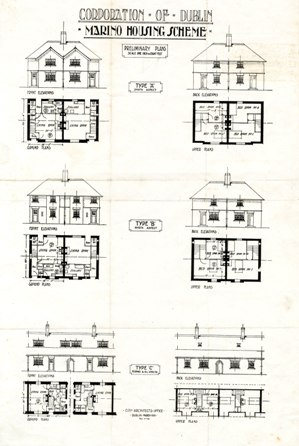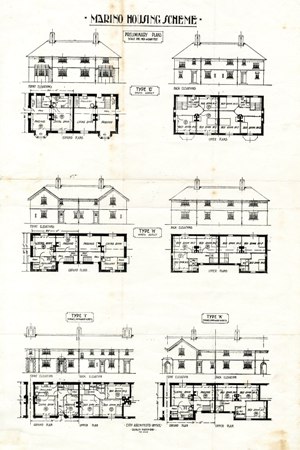Marino Garden Suburb
Published on 6th March 2017
The garden suburb of Marino was the first in Ireland and one of the earliest in Europe. It is located on the north side of Dublin City. This small garden village is unusual insofar as it was requested by the people themselves, at a public meeting held in Clontarf Town Hall in 1910. The historic village of Fairview was being redeveloped and the reclamation of land at the nearby Strand was underway in order to provide a public park. The lessor of the land, James Walter, wrote to the local authority, Dublin Corporation, subsequent to the public meeting informing them that he would sell them his part of the Marino farm to create a miniature garden city.

Image: Marino Elevation by Horace O'Rourke (1919) view larger version of this image
Marino Perspective Drawing by Raymond Unwin 1914 (click to enlarge)
The British town planners, Raymond Unwin and Patrick Geddes were brought to Dublin in 1914 by the Civics Institute of Ireland, a voluntary body engaged in raising consciousness of modern concepts. They became interested in the Marino project, and Unwin prepared a plan and detailed drawing for the scheme – however the outbreak of war meant that the project had to be shelved, and in the meantime the land was used for allotments. In 1918 the Dublin Corporation Housing Committee, together with City Architect Charles J. McCarthy, produced a plan of the proposed housing scheme and in the following year, housing architect Horace O’Rourke prepared a lavish drawing of the projected estate. Work began in 1922-3 once funding had been obtained from the Irish Free State government, and the entire scheme comprised 428 houses. In 1924 there was a temporary halt to building owing to disputes between the construction workers – but these were resolved three months later.
Marino Preliminary Plans No. 1 March 1919 (click to enlarge) | Marino Preliminary Plans No. 2 March 1919 (click to enlarge)
By 1926 the garden suburb at Marino was largely complete. On the ground floor there was a living room, parlour and scullery, with three bedrooms upstairs along with a hot press, bathroom and separate W.C. Houses were ranged around central parks and had neat front gardens for flowers and larger back gardens for fruit and vegetables to feed the family. Marino proved to be an inspiration for the nearby larger estate of Drumcondra, which followed on. Nowadays the houses in Marino are in private ownership.
Manuscript of the Month
Each month, Dublin City Archives will be showcasing a manuscript from their collections on our blog. Check back next month for the next instalment!


